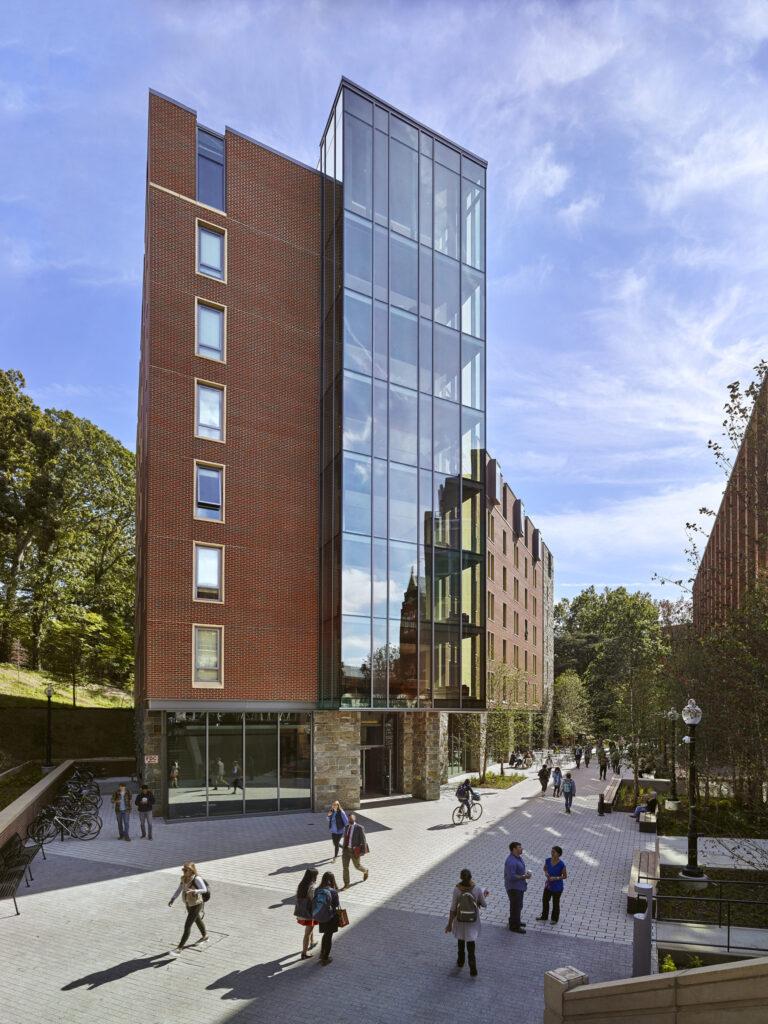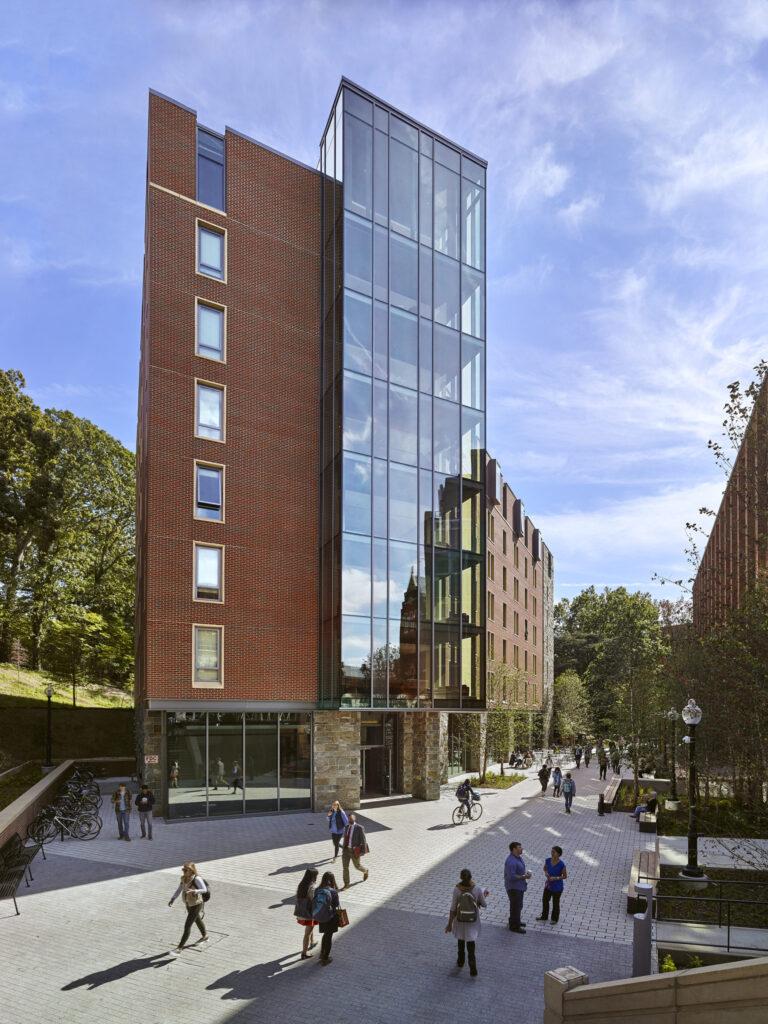A new report from the U.S. Green Building Council (USGBC) named Washington, D.C., on Jan. 17 as the 2022 national leader in green building, a measure of efficiency, sustainability and carbon emissions in a building’s construction and design.
The USGBC released the report Jan. 17 based on each state’s gross square footage per capita of buildings that are Leadership in Energy and Environmental Design (LEED) certified, a widely used green building rating system. D.C. had 46.06 LEED-certified gross square feet per capita in 2022 and certified over 115 green building projects, more than all 50 states, according to the report.
The state of Massachusetts had the most green building in the 2022 state rankings, despite its numbers being significantly below those of D.C. Massachusetts had 3.76 LEED-certified gross square footage per capita and 96 green building projects in 2022.
The USGBC did not rank D.C. because it is not a state, despite all of its work in creating green buildings, according to a Jan. 17 press release.
“As a federal territory, Washington, D.C., does not appear in the official top 10 list of states, but it consistently leads the nation in LEED-certified square footage per capita, in part because of the federal government and the District’s ongoing commitments to green building,” the press release said.
The rest of the top 10 in the USGBC ranking included Illinois, New York, California, Maryland, Georgia, Colorado, Virginia, Texas and Oregon. In total, the top 10 states in the ranking contained more than 353 million certified gross square feet over 1,225 green building projects within the past year.
USGBC developed LEED in 1994 to provide a system for buildings to reach environmental health and sustainability goals. LEED-certified buildings earn a certain number of points and are assigned to a corresponding level within the rating system, ranging from regular certified to platinum, with USGBC naming D.C. as the first LEED Platinum city in the world Aug. 31, 2017.
USGBC said its ranking system has expanded to a global standard for sustainability.
“The LEED rating system is the world’s most widely used green building program and was created by USGBC as a leadership standard defining best practices for healthy, high-performing green buildings,” the press release said.
D.C. has outpaced the rest of the country in LEED-certified square footage per capita every year since 2010, the earliest available ranking from USGBC. The Green Building Act of 2006 contributed to D.C.’s sustainable building development, as it required all nonresidential public buildings to achieve LEED certification, according to a recent USGBC article.

“This policy has ensured high-quality spaces that benefit all residents, like the 801 East Men’s Shelter, which was certified at the Gold level this year under LEED v4 for Building Design and Construction,” the article said.
Georgetown University has also contributed to D.C.’s LEED-certified area with at least eight LEED-certified buildings and nearly 900,000 square feet of LEED-certified building space on campus. Georgetown’s School of Continuing Studies (SCS), Regents Hall and the Healey Family Student Center (HFSC) are all Georgetown LEED Gold-certified buildings.
Dan Guilbeault, Georgetown’s director of sustainability for campus and community, said Georgetown has worked to achieve their LEED goals over the past several years.
“In 2009, Georgetown committed to meeting the U.S. Green Building Council’s Leadership in Energy and Environmental Design (LEED) Silver certification level in new buildings, which we have generally surpassed with recent buildings often achieving Gold and Platinum certification,” Guilbeault wrote to The Hoya.
Guilbeault said LEED rankings are important to consider because buildings play a large role in greenhouse gas emissions.
“Buildings are usually one of the largest contributors, if not the largest contributor, to greenhouse gas emissions,” Guilbeault wrote. “In the District, nearly 75 percent of emissions are from buildings and related energy usage. Reducing the energy required to heat and cool, light, and operate buildings is a foundational aspect of reducing greenhouse gas emissions.”
USGBC President and CEO Peter Templeton said LEED-certified green buildings have benefits beyond the environment as well, according to the Jan. 17 press release.
“LEED buildings are environmentally friendly, cutting their emissions and waste, and use less energy and water,” Templeton said in the press release. “At the same time, they also help reduce operational and maintenance costs, contributing to the bottom line.”






















